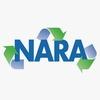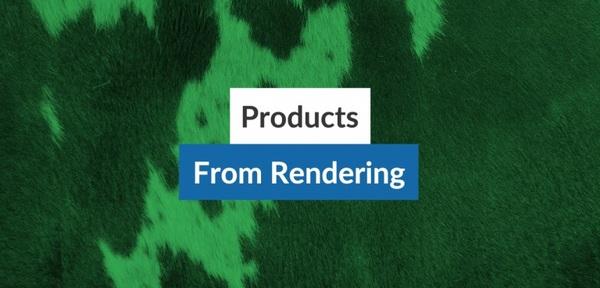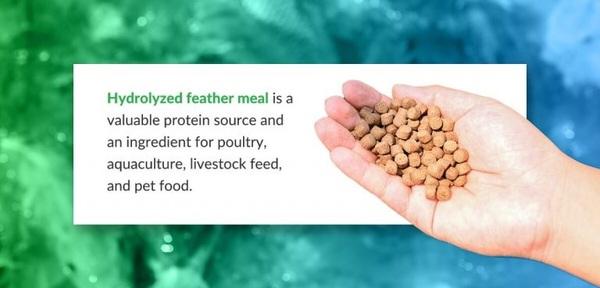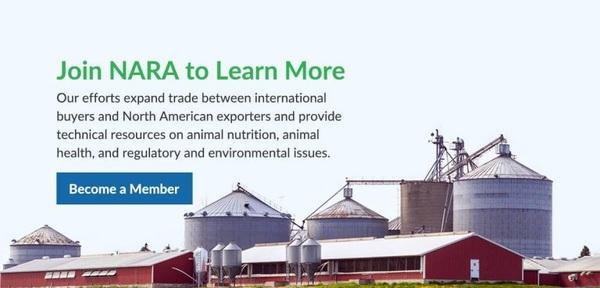
Content sponsored by:
North American Renderers Association (NARA)
Products From Rendering
Published: March 22, 2024
By: North American Renderers Association (NARA)

Rendering involves repurposing animal co-products that would otherwise be discarded. It converts the parts of a meat animal we choose not to eat into stable, usable materials such as fuel, pet food, and livestock feed, creating a highly sustainable alternative.
Below, learn more about products made from rendered materials in detail. You can discover even more by listening to the North American Renderers Association (NARA) podcast for free on our website.
Why Is Rendering Important?
Rendering is vital in the United States, considering that about 50% of an animal is inedible. Instead of wasting this unused material in landfills, the process allows renderers to reclaim and reuse them for valuable oil, fat, and protein products.
Animal rendering creates a sustainable solution by reducing carbon emissions and other greenhouse gases, conserving valuable natural resources. Rendering has economic benefits, accounting for $10 million in economic activities in the United States annually.
Cattle Rendering Products
Here are three cattle products and how they’re utilized in rendering:
1. Meat and Bone Meal
Meat and bone meal (MBM) is used to produce poultry, pet, and livestock feed to improve the amino acid profile. It is also used as an organic fertilizer because of its high nitrogen, calcium, and phosphorus concentration. MBM may also be a source of alternative renewable energy due to its high caloric content.
2. Blood
Cattle blood may be dried whole or separated into blood meal or plasma products. Blood meal is dried powder from cattle blood used in aquaculture, poultry and piglet feed, and organic fertilizer due to its high protein and nitrogen content. Bovine plasma products are also used in livestock feed and pet food.
Cattle blood collection occurs after the edible parts are separated, dried up, and rendered into blood meal. This makes it easier to incorporate the product into rations for animals. The high protein content is ideal for livestock that live on plant co-products, forages, and cereal grain diets.
Blood meal has exceptional nutritional value for soil and plants. The presence of nitrogen facilitates photosynthesis, improves the soil’s acidity, and provides added nutrients when the soil loses essential nutrients during the harsh seasons.
3. Tallow
Tallow is the solidified, rendered cattle fat processed to remove impurities. Room-temperature beef tallow is shelf-stable and has a waxy texture similar to coconut oil or butter. It can be kept unrefrigerated in airtight containers for several months without spoiling.
Tallow is ideal for producing biofuel, a renewable, clean-burning diesel fuel replacement, making livestock and poultry feed and pet foods, and producing soap. The acids in tallow can also be used in a variety of products.
For example, oleic acid helps make textiles, shampoo, lubricants, emulsifiers, cleaners, and creams. Stearic acid is vital in making tires, rubber, lubricant, and crayons. Linoleic acid is used in the production of paints and lubricants. Glycerin, which is an alcohol, is used in making glues, ink, solvents, and explosives.
Poultry Rendering Products
Poultry rendering converts poultry co-products into valuable materials, including the following:
1. Poultry Meal
Poultry meal adds to animal nutrition and serves as an inexpensive protein source. It can feed animals such as pigs, horses, and cows. Poultry meal is also used as aquaculture feed. Poultry meal contains calcium and phosphorus, which may be challenging to obtain in cases where animals do not have free access to pasture.

2. Feather Meal
Feather meal is a co-product of processing poultry, which is made by hydrolyzing under high temperatures and pressure to sterilize the feathers before grinding and drying them. Hydrolysis converts the complex, fibrous proteins called keratin into feather meal containing amino acids. Additionally, it facilitates the digestion of feather meals by breaking down protein bonds in the raw materials.
Hydrolyzed feather meal is a valuable protein source and an ingredient for poultry, aquaculture, livestock feed, and pet food. Generally, feather meal provides animals with essential nutrients and improves fur quality. The product’s low ash content helps with the digestibility of various animal species. Feather meal is also valuable in producing organic fertilizer.
3. Blood Meal
Poultry blood meal is a natural source of protein and is used in making feed for livestock and aquaculture and fertilizer. Like cattle blood meal, the raw material is collected, dried, made into blood meal, and incorporated into rations. The three methods for processing whole blood are batch-dry rendering, spray rendering, and ring-dried rendering.
4. Poultry Fat
Rendered poultry fat is primarily obtained from poultry waste tissue and has multiple uses. Poultry fat is used in producing biofuel and food for animals. It can also be split into acids for varying purposes, as listed above.
Pig Rendering Products
Indelible pig products can be rendered and used for many other purposes, including the following:
1. Pork Meal
MBM from pigs is used in making food products for cows, sheep, goats, poultry, and other livestock. It also serves as a healthy ingredient in feeding pets.
2. Blood
Blood meal is a highly nutritional product derived from porcine blood. It has high protein content and offers healthy dietary options for livestock, aquaculture, and piglets. Porcine blood meal also has high nitrogen content, making it suitable for providing additional nutrients for soil and plants.
3. Plasma
Plasma is a highly functional protein ingredient obtained from blood and used in the production of animal feed and pet food to improve digestion, respiration, and reproduction. There are different types of plasma, including spray-dried plasma produced from porcine sources.
Plasma is a fraction of the blood and excludes other components like the red blood cells. The processing methods used for plasma also differ from that of blood meal, allowing the former to retain the protein functionality.
4. Grease
Grease from pigs is used in producing biofuels and biomass-based diesel. It can also be used in making animal food. When split, the acids help create many different upcycled products, such as the above examples.

Join NARA to Learn More
NARA partners with renderers like you across North America to represent your interests to regulatory and other government agencies and promote the greater use of animal co-products.
We advocate for public health and a sustainable food chain. Our efforts expand trade between international buyers and North American exporters and provide technical resources on animal nutrition, animal health, and regulatory and environmental issues.
You can learn more about where rendered products go on our podcast and take advantage of the many educational materials we make available.
Related topics:
Authors:
North American Renderers Association (NARA)
Recommend
Comment
Share

Would you like to discuss another topic? Create a new post to engage with experts in the community.

.jpg&w=3840&q=75)